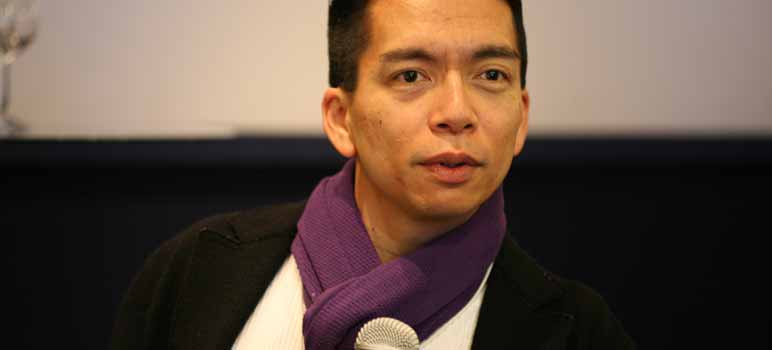On creativity and challenges in leading creatives
Former Rhode Island School of Design president John Maeda defines the key qualities of standout innovators – a willingness to struggle, to make mistakes, to live with ambiguity – and tackles the creative’s biggest challenge: How to lead other creatives. Perhaps confronting the status quo, killing bureaucracy, and leading change can be its own art form.
Notes from John’s presentation
- Creative — sometimes considered to be a bad word.
- Art and cretaivity is sometimes an awkward thing.
- We look for solutions (like iPads) to problems that we don’t really have.
- Evolution of computer technology, Internet, and mobile computing — an awkward loop. Starting with text, adding images, then audio, and video — each technology has followed the same loop.
- Feeling that work we create is empty — an ongoing effort to fill in the gaps.
- Told he was the creative guy his whole life and to not worry about the money part of things. He realized he needed to learn the orgainzational/leadership side of things in order to succeed.
- Paul Rand – the Michael Jordan of graphic design.
- Spent a day once working with Paul Rand when Paul’s assistance didn’t show up for work the day John was visiting
- Advice from Paul Rand: Make lots of money (“woah, Yoda doesn’t talk like that”), in your life you will do things that you don’t like to do, and you can use that money to make the things you want to do.
- Labor of love comes from the money you make doing other things.
- All artists yearn to struggle. Only when they struggle do they feel alive.
- How do you lead creative people? One of John’s and future leader’s biggest challenges.
- Getting angry isn’t useful. Contemplated tweeting “Anger is an emotion I don’t often feel but often field.” Talked about transforming negative feedback received to make it easier to comprehend and consider.
- Creative people love mistakes. We love to learn from them. We don’t need to be right, but we hope to be right.
“Simplicity” and the Glass House


Watch this video on YouTube
While working on my undergraduate degree I used to take some time to sit in Waldo Library and read magazines — looking for visual inspiration, interesting ideas, etc. I loved to read about everything. This was during the mid to late 1990s when Wired magazine was at its best, and when I first learned about an intriguing fellow named John Maeda.
Over the years, John has done some amazing work at MIT, in the Media Lab, through MAEDASTUDIO, writing about simplicity, and has in the past year moved on to new endeavors: becoming the current president of the prestigious Rhode Island School of Design. I followed him from his old blog on simplicity, to his new one titled Our RISD, where he has been writing about getting into his new role and building community etc.
This week he posted an interesting video, done by the folks over at cool hunting, about simplicity and the glass house. I found it very interesting, and so wanted to share it with you.
Well designed advice for a fulfilling daily life


“Choosing when to care less versus when to care more lies at the heart of living an efficient but fulfilling daily life.” @johnmaeda
True—and equally so whether applied to projects, people, objects, causes, or beliefs.
Good choices can spare you worry, effort, and time. Sometimes even the bad choices can turn out well in the end (you learn important things). Over time you gain the opportunity to better understand yourself and what matters most.
“Everything is art”


Watch this video on YouTube
Find John Maeda online
- https://design.co/
- https://maeda.pm/ – blog where Maeda shares his “passion for product and data, grounded in technology / business / design curiosities with a dash of leadership reflections.”
- https://maedastudio.com/ – professional website
